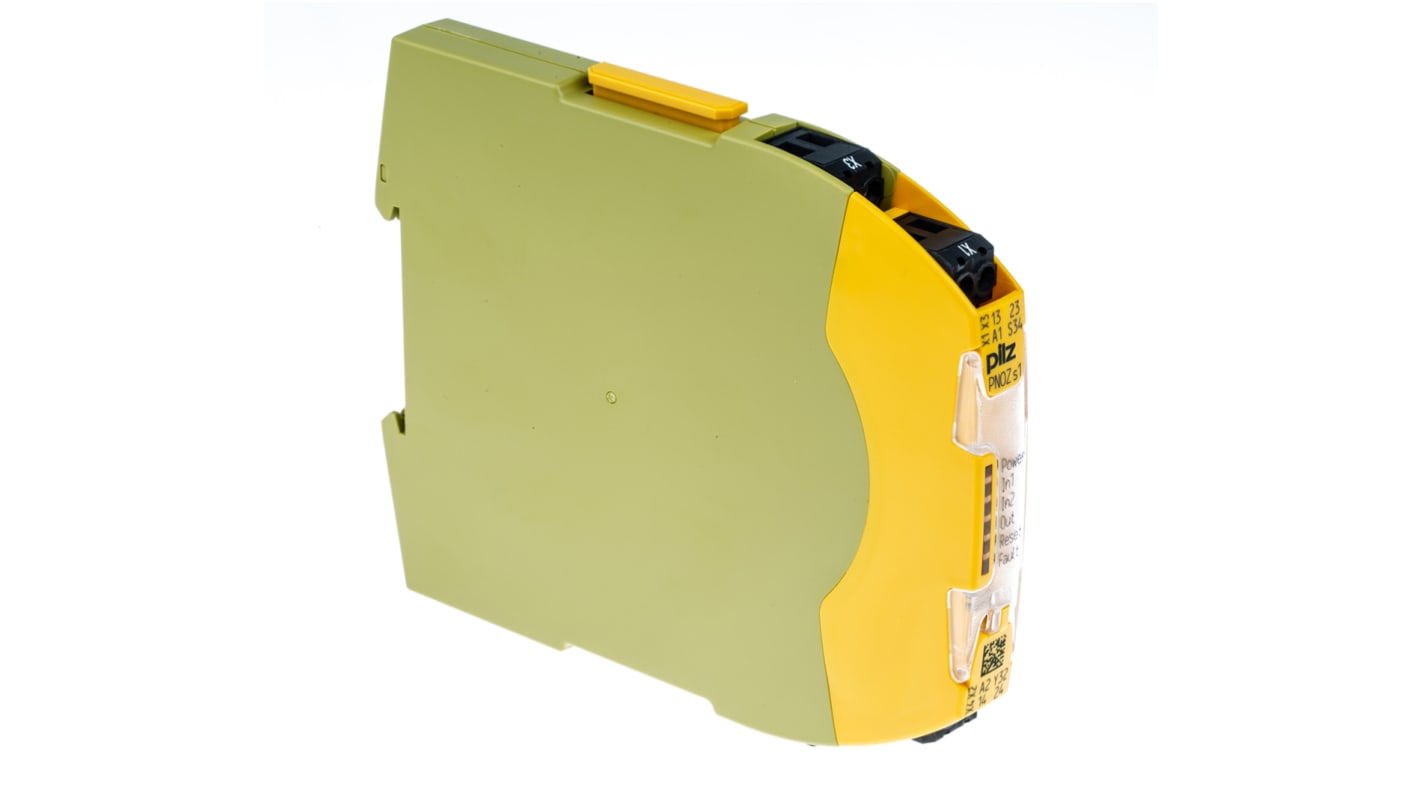Pilz PNOZsigma PNOZ s1 Emergency Stop Safety Relay, 24V dc, Single Channel, 2 Safety Contacts
- RS庫存編號:
- 155-939
- 製造零件編號:
- 750101
- 製造商:
- Pilz
單價 个
HK$1,281.70
80 現貨庫存,可於3工作日發貨。*
* 交貨日期可能會根據您選擇的數量和交貨地址而變更。
訂單金額滿 HK$850.00 即可享受 免費 送貨服務
單位 | 每單位 |
|---|---|
| 1 + | HK$1,281.70 |
- RS庫存編號:
- 155-939
- 製造零件編號:
- 750101
- 製造商:
- Pilz
- COO (Country of Origin):
- DE
PNOZ S1 series by PILZ
The PNOZ S1 series of Safety relay by PILZ. Known for their reliability and durability, PILZ safety relays offer you second to none safety protection features to ensure you and your workplace stay safe. Specifically, the S1 series is suitable for many different applications which you can find listed below.
Features and benefits:
• LED display that offers you the following measures:
- Supply voltage
- Input status, channel 1
- Input status, channel 2
- Switch status, safety contacts
- Reset Circuit
- Error indication
- Supply voltage
- Input status, channel 1
- Input status, channel 2
- Switch status, safety contacts
- Reset Circuit
- Error indication
Safety features
• Self-monitoring built in
• Safety functions remain effective in the case of components failure
• Correct opening and closing is tested automatically at the end of each on / off cycle
• The transform uses an electronic fuse which prevents short circuiting.
• Safety functions remain effective in the case of components failure
• Correct opening and closing is tested automatically at the end of each on / off cycle
• The transform uses an electronic fuse which prevents short circuiting.
Applications
• E STOP pushbutton
• Safety gate limit switches
• Reset buttons
Technical safety parameters
• EN 60947-5-1
• EN 60204-1
• VDE 0113-1
• EN 60204-1
• VDE 0113-1
How do Safety Relays work and what are they used for?
Safety Relays work by helping reduce unnecessary risk and hazard within your circuit. A typical circuit configuration may look like a production line where highly automated machinery works quickly, i.e. a production or packing line in a warehouse or factory. This line forms part of your 'circuit' and along that circuit you will have safety devices in place like emergency push buttons, safety curtains or pressure sensitive mats. To ensure complete safety in these environments, a safety relay can be added to your circuit to allow you full control and monitoring of your working environment. A safety relay will run regular checks down your circuit by sending pulses back and forth to confirm whether any (for example) wiring was implemented incorrectly or any welding has occurred along the circuit. Once the relay has detected this, it would then shut down the area by cutting off the power, until the fault can be determined and fixed. Most recent safety relays feature intuitive LED displays that will alert users to any faults, this is of course useful to prevent harm to users and also proactively engage in maintenance before any machinery is damaged beyond repair, so certain cost savings can be associated when using a safety relay.
Some safety relays have specific functions and only work with certain devices like E-STOPs, some work better with other devices like safety curtains. More than one safety relay can be used to give you total monitoring of your circuit, ensuring you and your employees safety.
Some safety relays have specific functions and only work with certain devices like E-STOPs, some work better with other devices like safety curtains. More than one safety relay can be used to give you total monitoring of your circuit, ensuring you and your employees safety.
What are the differences between a traditional 'relay' and a 'safety relay'?
A traditional relay will open and close your circuit and the switch devices down that line, however it will not monitor it in the same way a safety relay will and cannot automatically shut down specified areas to prevent harm to the machinery or workers. Safety relays are not prone to the same potential risks that traditional relays are and can be relied upon to monitor short circuit faults, ground faults or wire breakage. Offering a greater protection over their counterpart relays, they are specifically designed with your safety in mind.
How do you operate a Safety Relay?
You must first align and wire the safety relay into your line and follow the setup instructions provided (will vary per manufacturer). Follow the onscreen instructions of the LED parallel to your instructions to perform integration into your circuit line. Depending on what parameters you set will determine the function of the safety relay (i.e. you tell it to cut off certain areas after certain criteria have been met, or you opt for a circuit wide halt of the line).
Attribute | Value |
|---|---|
| Supply Voltage | 24V dc |
| Number of Channels | 1 |
| Safety Contacts | 2 |
| Function | Emergency Stop |
| Reset Method | Automatic & Manual |
| Range | PNOZsigma |
| Safety Category ISO 13849-1 | 3 |
| PL ISO 13849-1 | e |
| SIL IEC 61508 | 2 |
| Terminal Type | Screw |
| Series | PNOZ s1 |
| Width | 12.5mm |
| Depth | 120mm |
| Length | 100mm |
| Performance Level | e |

